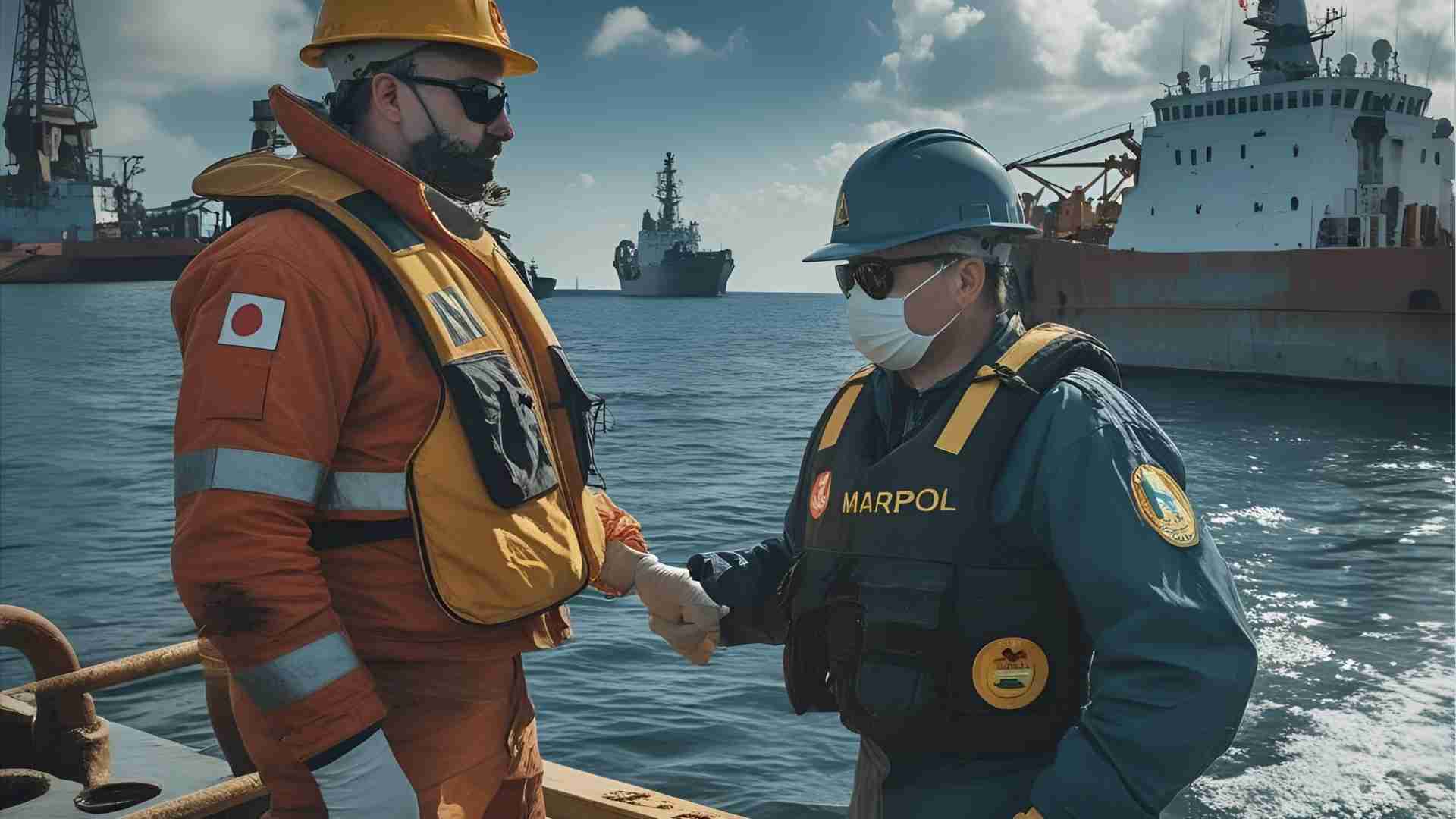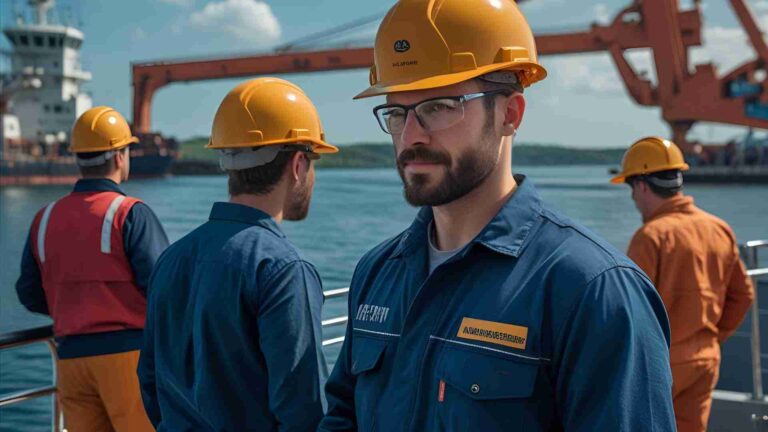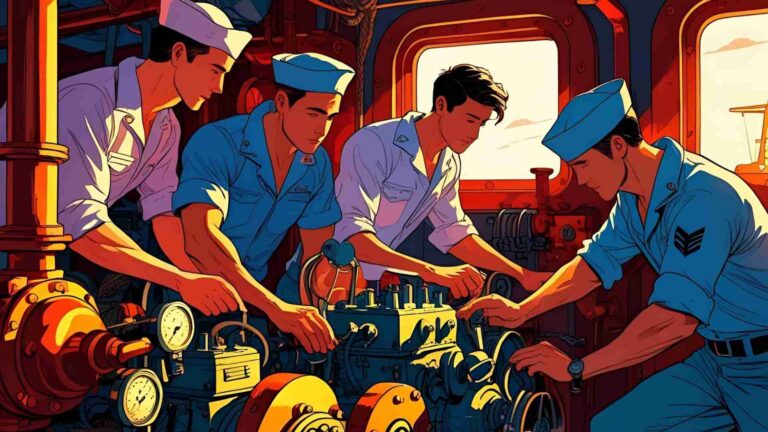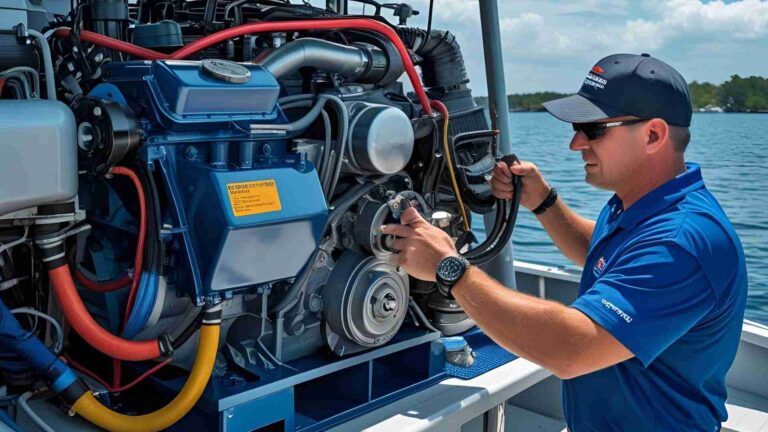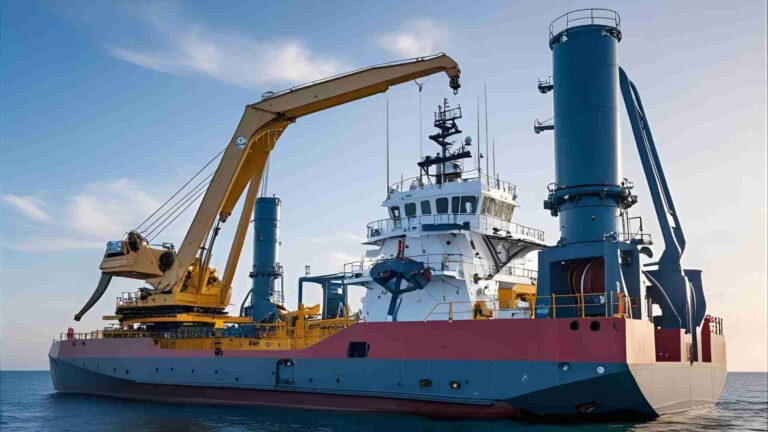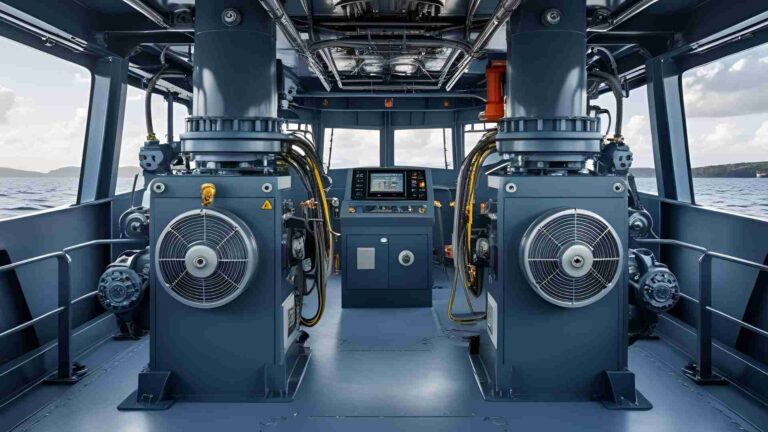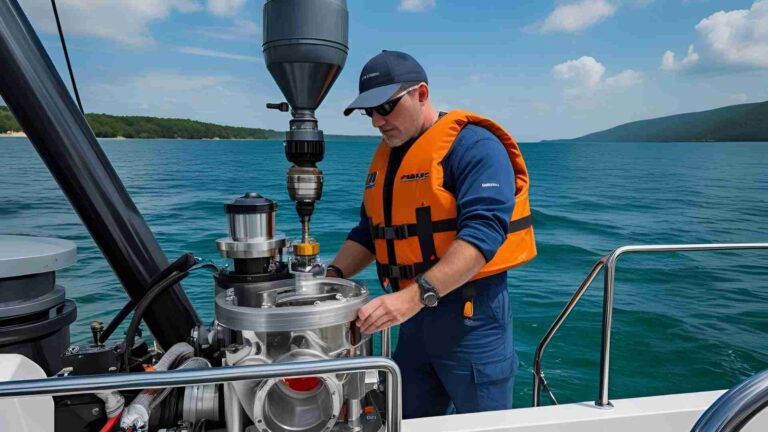MARPOL Annex I – Prevention of Pollution by Oil
Explore MARPOL Annex I: key regulations, equipment, and compliance for preventing oil pollution from ships. A complete guide for mariners.
The oceans, covering over 70% of the Earth’s surface, are vital to global ecosystems, supporting marine life and human livelihoods. However, maritime activities, particularly oil transportation, pose significant risks to these ecosystems through oil pollution. The International Maritime Organization (IMO) introduced MARPOL Annex I—Regulations for the Prevention of Pollution by Oil—as a cornerstone of the International Convention for the Prevention of Pollution from Ships (MARPOL). Enforced since October 2, 1983, Annex I addresses both operational and accidental oil discharges, safeguarding marine environments. This comprehensive guide explores the regulations, equipment, enforcement mechanisms, and innovations under MARPOL Annex I, offering valuable insights for ship cadets, maritime students, engineers, and industry professionals.
Why MARPOL Annex I Matters
Oil pollution from ships, whether from catastrophic spills or routine discharges, has severe ecological and economic consequences. Oil spills, like the Exxon Valdez (1989) and Prestige (2002), demonstrated the devastating impact of oil on marine ecosystems, causing mass mortality of marine species, contamination of food chains, and long-term environmental damage. Even operational discharges, such as bilge water or tank washings, contribute to chronic pollution if not properly managed. MARPOL Annex I establishes a robust framework to mitigate these risks, applying to over 99% of the global merchant fleet, including all ships above 400 gross tonnage (GT) and oil tankers above 150 GT.
The annex’s regulations ensure that ships are equipped with pollution-prevention systems, adhere to strict discharge criteria, and maintain accurate records. By mandating structural designs like double hulls and operational protocols like the Oil Record Book (ORB), Annex I has significantly reduced oil pollution incidents over the past four decades, making it a linchpin of sustainable maritime operations.
Evolution of MARPOL Annex I
MARPOL Annex I was born out of necessity following high-profile oil spill disasters, such as the Torrey Canyon (1967), which spilled 119,000 tons of crude oil, exposing the lack of international regulations. Adopted in 1973 and enhanced by the 1978 Protocol, Annex I entered into force in 1983. Subsequent amendments, notably in 1992, 2001, and 2003, introduced transformative measures like mandatory double hulls for oil tankers, addressing both accidental and operational pollution.
Today, over 160 IMO member states have ratified Annex I, reflecting global commitment to marine protection. The annex’s scope includes:
- Preventing operational oil discharges (e.g., bilge water, tank washings)
- Minimizing accidental spills through design standards
- Enforcing record-keeping and compliance via inspections
- Designating Special Areas with stricter regulations
Key Regulations and Technical Requirements
MARPOL Annex I outlines stringent requirements for ships to prevent oil pollution, covering discharge criteria, equipment, and operational protocols. Below are the core components.
Oil Discharge Criteria
1. Engine Room Discharges (All Ships ≥ 400 GT)
Oily water from machinery spaces, such as bilges, contains residues from fuel and lubricating oils. Annex I regulates these discharges under Regulation 15 to ensure minimal environmental impact.
Key Requirements:
- Oil Content Limit: Effluent must not exceed 15 parts per million (ppm) of oil.
- Equipment: Ships ≥ 400 GT must have an approved Oily Water Separator (OWS) with a 15 ppm alarm and automatic stopping device. Ships ≥ 10,000 GT require an Oil Discharge Monitoring and Control System (ODMCS).
- Discharge Conditions:
- The ship must be en route (moving).
- Discharge must occur through an approved OWS.
- Discharge is prohibited in Special Areas unless equipped with an ODMCS and outside these zones.
- The ship must be more than 12 nautical miles from the nearest land.
- Record Keeping: All discharges must be logged in the Oil Record Book (Part I).
Prohibited Discharges:
- Within Special Areas (e.g., Mediterranean, Baltic, Antarctic).
- If the ship is stationary.
- If oil content exceeds 15 ppm.
2. Cargo Tank Cleaning Discharges (Oil Tankers ≥ 150 GT)
Tankers generate oily water during cargo tank cleaning, regulated under Regulation 34.
Key Requirements:
- Oil Content Limit: Effluent must not exceed 15 ppm.
- Location: Discharge is allowed only outside Special Areas and more than 50 nautical miles from land.
- En Route: The tanker must be moving.
- Discharge Rate: Maximum of 30 liters per nautical mile.
- Total Oil Discharge:
- Tankers built after December 31, 2015: ≤ 1/30,000 of total cargo volume.
- Tankers built before: ≤ 1/15,000 of total cargo volume.
- Equipment: Tankers ≥ 150 GT must have an ODMCS.
- Record Keeping: Logged in Oil Record Book (Part II).
Prohibited Discharges:
- In Special Areas.
- If not en route.
- If oil content exceeds 15 ppm.
Oil Record Book (ORB)
The ORB is a mandatory document for ships ≥ 400 GT (Part I) and tankers ≥ 150 GT (Parts I and II). It records all oil-related operations, including:
- Bunkering
- Discharges of oily mixtures
- Tank cleaning and ballasting
- Accidental spills
ORB Structure:
- Part I (All Ships): Covers machinery space operations (e.g., bilge water, sludge disposal).
- Part II (Tankers): Includes cargo and ballast operations (e.g., tank washing, cargo loading).
Entries must be accurate, signed by the master or chief engineer, and retained for three years. Port State Control (PSC) inspections scrutinize ORBs, and falsification can lead to severe penalties, as seen in a $2.7 million fine imposed on a Greek shipping company in 2021.
Crude Oil Washing (COW)
COW, mandatory for tankers ≥ 20,000 DWT, uses crude oil to clean cargo tanks, reducing sludge and maximizing cargo recovery. Washings are collected in slop tanks and processed through the ODMCS to ensure compliance with discharge limits. Operations are logged in ORB Part II.
Slop Tanks
Slop tanks store oily mixtures from tank washing and cargo operations. They prevent illegal discharges by holding residues until processed or offloaded at port reception facilities. Operations involving slop tanks are recorded in the ORB.
Oil Discharge Monitoring Equipment (ODME)
ODME, required for tankers ≥ 150 GT, monitors oil content in discharges from cargo and ballast operations. It ensures compliance with the 30 liters per nautical mile limit and shuts off discharge if limits are exceeded. Crew training on ODME operation is critical to avoid violations.
Special Areas
Special Areas are ecologically sensitive regions with stringent discharge rules. Under Annex I, no oil or oily mixtures can be discharged in these areas, regardless of concentration. Designated Special Areas include:
- Mediterranean Sea
- Baltic Sea
- Black Sea
- Red Sea
- Persian Gulf Area
- Gulf of Aden
- Antarctic Sea
- Northwest European Waters
- Oman Area of the Arabian Sea
- Southern South African Waters
Chart: MARPOL Annex I Special Areas
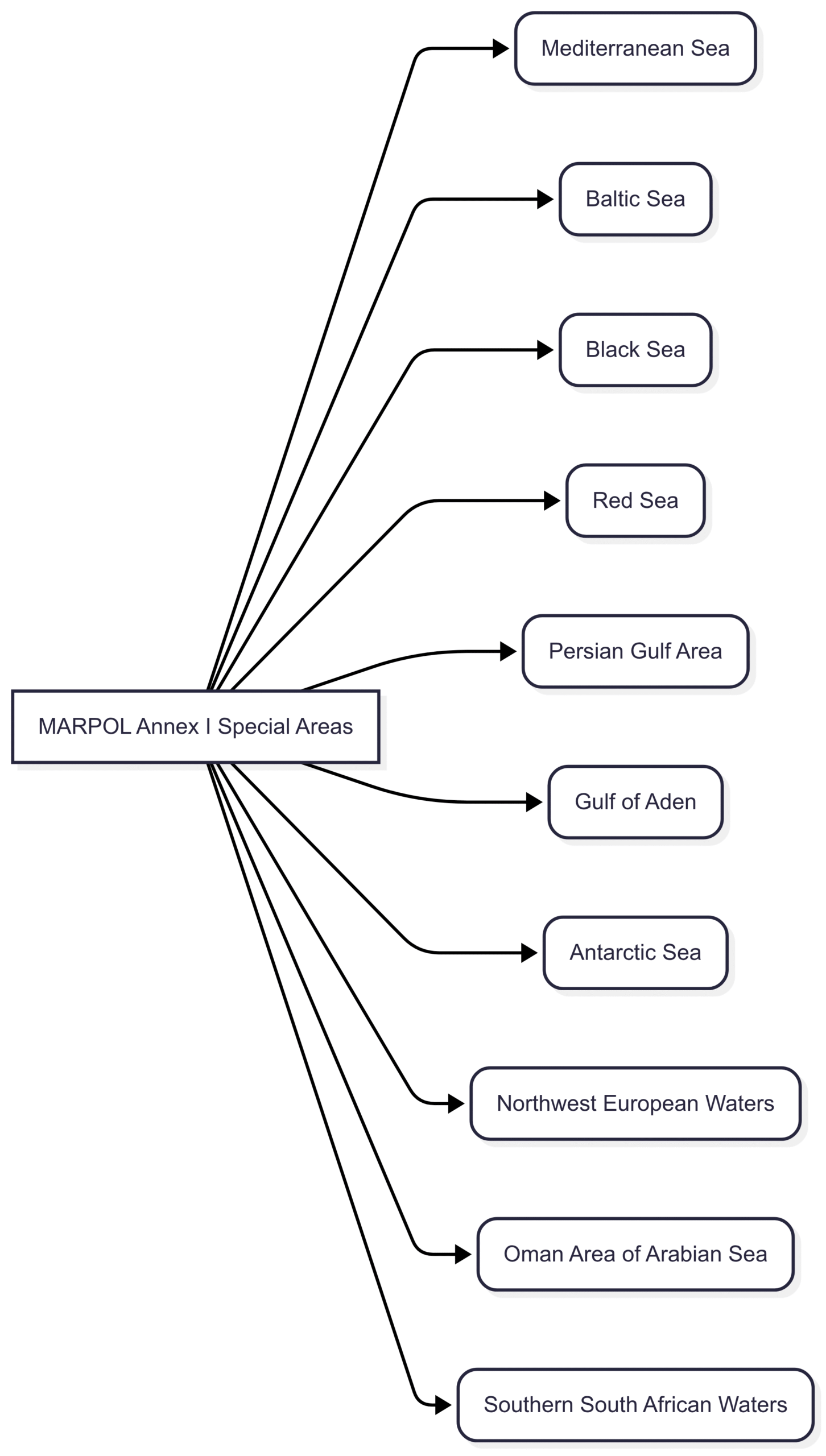
Segregated Ballast Tanks (SBT)
SBTs, mandatory for tankers ≥ 20,000 DWT, isolate ballast water from cargo oil systems, reducing contamination risks. This design, introduced in 1983, has significantly lowered operational pollution.
Sludge Tanks and International Shore Connection
Sludge tanks store oily residues from fuel and lubricating oil purification. Ships must use standard International Shore Connections to transfer sludge to port reception facilities, ensuring compliant disposal.
Shipboard Oil Pollution Emergency Plan (SOPEP)
SOPEP, required for tankers ≥ 150 GT and other ships ≥ 400 GT, outlines procedures for:
- Notifying authorities
- Containing spills
- Coordinating cleanup
Digitized SOPEPs enhance efficiency, and crew familiarity with the plan is essential for effective spill response.
Double Hull Requirements
Double hulls, mandatory for new tankers since 1996 (Regulation 19), create a protective buffer between cargo tanks and the sea, reducing spill risks in collisions or groundings. Existing tankers were phased in by 2015.
Fuel Oil Tank Protection
For ships delivered after August 1, 2010, with fuel oil capacity ≥ 600 m³:
- Individual tanks must not exceed 2,500 m³.
- Tanks must be located inboard, with minimum distances calculated based on fuel volume (e.g., w = 0.4 + 2.4C/20,000 for 600–5,000 m³).
Pump Room Protection
Pump rooms on tankers must have a double bottom, with a minimum height calculated as L = B/15 or 2 meters (whichever is less), where B is the ship’s breadth.
Equipment Specifications and Costs
MARPOL Annex I mandates specific equipment to ensure compliance. Below is a table summarizing key equipment, specifications, and approximate costs.
| Equipment | Specifications | Approximate Cost (USD) |
|---|---|---|
| Oily Water Separator (OWS) | 15 ppm alarm, automatic shutdown, capacity based on ship size (0.5–5 m³/h) | $10,000–$50,000 |
| Oil Discharge Monitoring Equipment (ODME) | Monitors oil content, auto-shutdown if >30 liters/nm, tanker-specific | $20,000–$100,000 |
| Oil/Water Interface Detector | Detects oil-water interface in tanks, mandatory for tankers | $5,000–$15,000 |
| Crude Oil Washing System | High-pressure crude oil jets, tanker-specific, ≥20,000 DWT | $100,000–$500,000 |
| International Shore Connection | Standard flange for sludge transfer to port facilities | $1,000–$5,000 |
Note: Costs vary based on ship size, manufacturer (e.g., Alfa Laval, Wärtsilä), and installation complexity. Prices are indicative and sourced from industry estimates.
Port State Control (PSC) and Compliance
PSC inspections, conducted under regional regimes like the Paris MoU and Tokyo MoU, ensure Annex I compliance. Inspectors check:
- ORB accuracy
- Equipment functionality (OWS, ODME)
- Crew knowledge of SOPEP and pollution prevention
- Tank soundings and seals
Non-compliance can result in fines, detentions, or criminal charges. In 2023, 7% of Paris MoU detentions were due to ORB deficiencies, highlighting the need for meticulous record-keeping and crew training.
Real-World Impact and Case Studies
The Prestige Disaster (2002)
The sinking of the Prestige tanker off Spain released 63,000 tons of oil, devastating marine life and coastal economies. The lack of a double hull exacerbated the spill, accelerating global adoption of double-hull requirements under Annex I.
Industry Transparency
Leading companies like Maersk and NYK Line publish environmental reports, verified by classification societies (e.g., DNV, Bureau Veritas), showcasing Annex I compliance. These reports align with ESG (Environmental, Social, Governance) goals, reflecting investor demand for sustainable practices.
Innovations and Future Outlook
Digital Compliance Systems
Modern ships use real-time monitoring and blockchain-based ORBs to enhance transparency and reduce errors. These systems streamline PSC inspections and improve accountability.
Eco-Friendly Lubricants
Biodegradable lubricants, compliant with EU Ecolabel standards, minimize environmental harm from leaks. Companies like TotalEnergies are investing in these solutions.
Satellite and Drone Surveillance
Ports in sensitive areas, like the Baltic Sea, deploy drones and satellites to detect illegal discharges, enhancing enforcement.
ESG Integration
Annex I compliance is increasingly tied to ESG reporting, with investors scrutinizing environmental performance. Non-compliance risks reputational and financial damage.
Surveys and Certificates
Annex I requires periodic surveys to verify compliance:
- Initial Survey: Before commissioning, inspecting all Annex I equipment.
- Annual Survey: Within three months of the IOPP certificate anniversary.
- Intermediate Survey: Replaces an annual survey in the second or third year.
- Renewal Survey: Every five years, comprehensive inspection.
- Additional Survey: Post-repair or modification.
- Condition Assessment Scheme (CAS): For single-hull tankers, ensuring structural integrity.
The International Oil Pollution Prevention (IOPP) Certificate, valid for up to five years, is issued upon successful surveys. It may be extended by three months for ships at sea during expiry.
Crew Responsibilities
The ship’s crew is pivotal to Annex I compliance:
- Maintain equipment (OWS, ODME) in working condition.
- Conduct careful oil transfers and bunkering.
- Accurately log operations in the ORB.
- Participate in pollution prevention drills.
- Familiarize with SOPEP and spill response tools.
Environmental and Economic Impacts of Oil Pollution
Oil spills disrupt marine ecosystems, contaminate food chains, and harm coastal communities. Chronic discharges, though less visible, accumulate over time, affecting biodiversity and fisheries. Annex I’s measures have reduced oil spill incidents by over 90% since the 1970s, per IMO data, but vigilance remains critical.
Frequently Asked Questions (FAQ)
- What is the main objective of MARPOL Annex I?
To prevent operational and accidental oil pollution from ships through regulations on equipment, discharges, and design. - What is the 15 ppm rule?
Discharges must have less than 15 ppm oil content, monitored by approved equipment. - Who needs a SOPEP?
Tankers ≥ 150 GT and other ships ≥ 400 GT must carry a SOPEP for spill response. - Can ships legally discharge oil?
Yes, if <15 ppm, processed through approved systems, and outside Special Areas (>12 nm from land for non-tankers, >50 nm for tankers). - What are the penalties for non-compliance?
Fines, vessel detention, or criminal charges, depending on jurisdiction and violation severity.
Conclusion
MARPOL Annex I is a cornerstone of global efforts to protect marine environments from oil pollution. Its comprehensive regulations—covering discharge limits, equipment standards, and crew responsibilities—have transformed maritime operations, reducing oil spills and fostering sustainability. As technology advances and environmental expectations rise, the shipping industry must continue to innovate and comply, ensuring the oceans remain a lifeline for future generations.
Happy Boating!
Share MARPOL Annex I – Prevention of Pollution by Oil with your friends and leave a comment below with your thoughts.
Read Heat Exchangers on Ship Explained until we meet in the next article.
